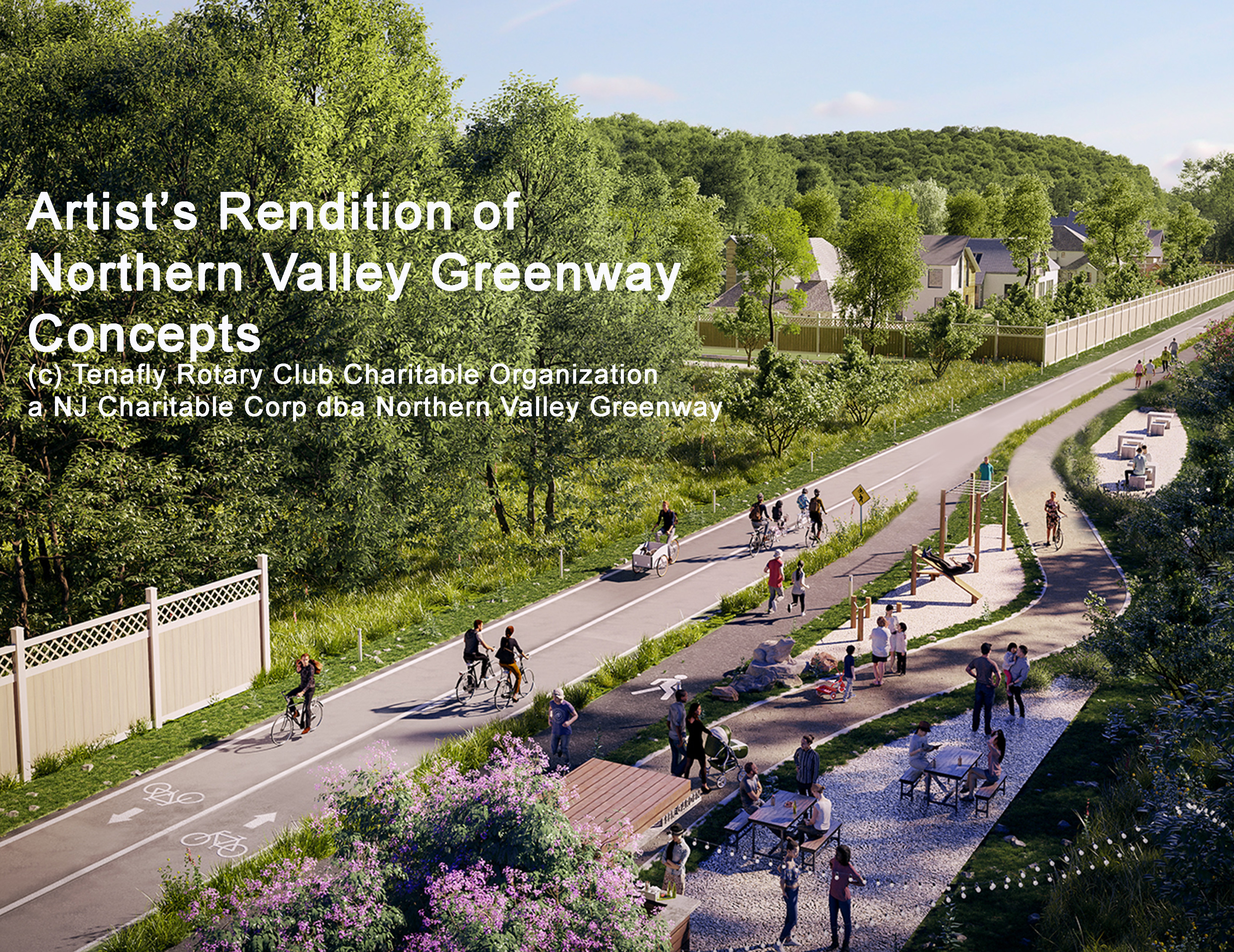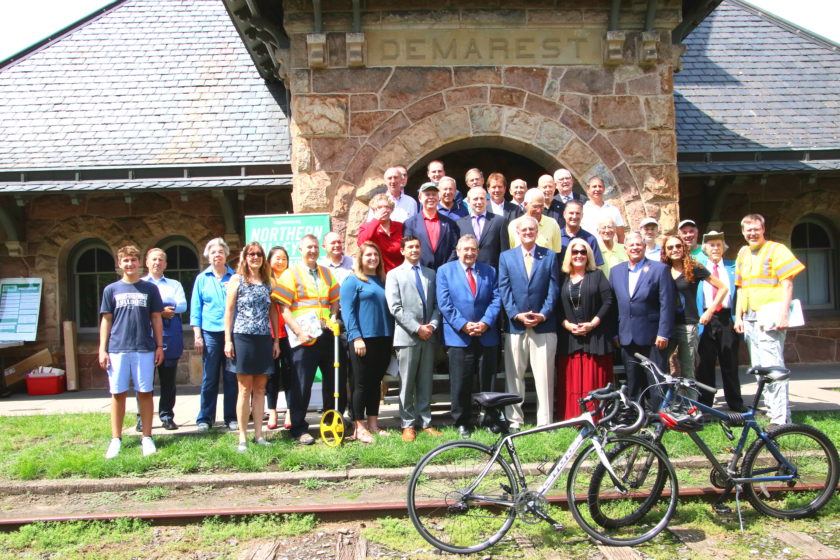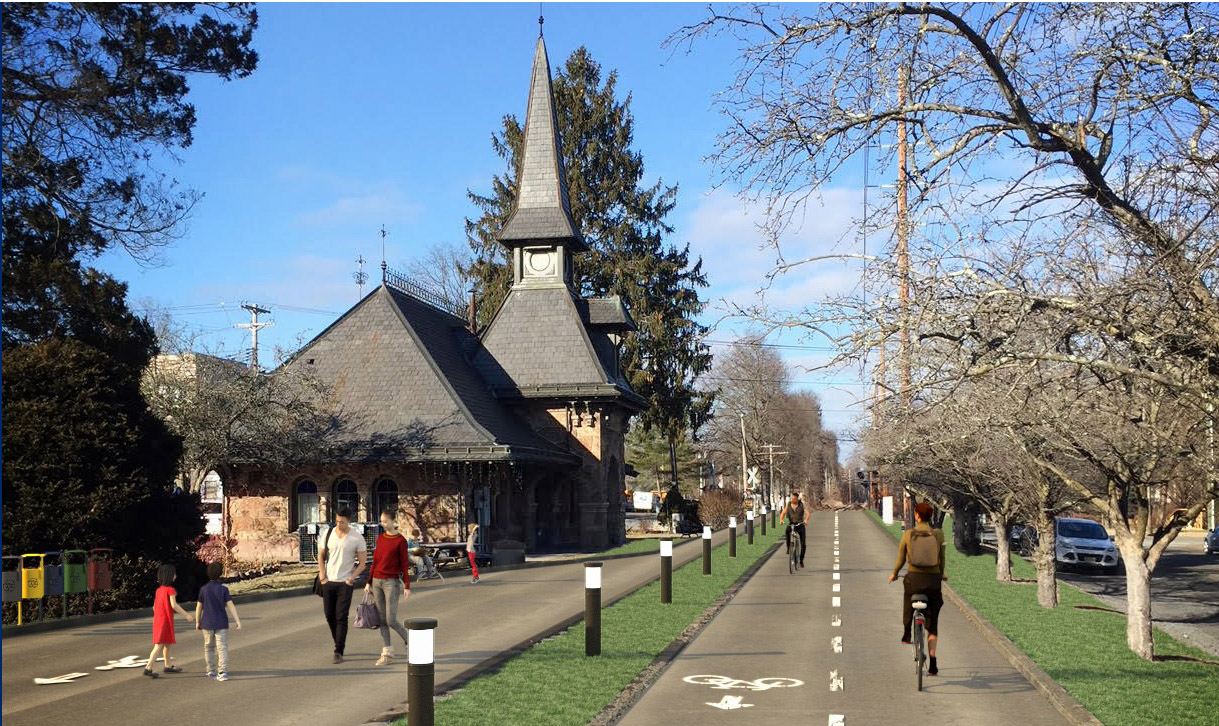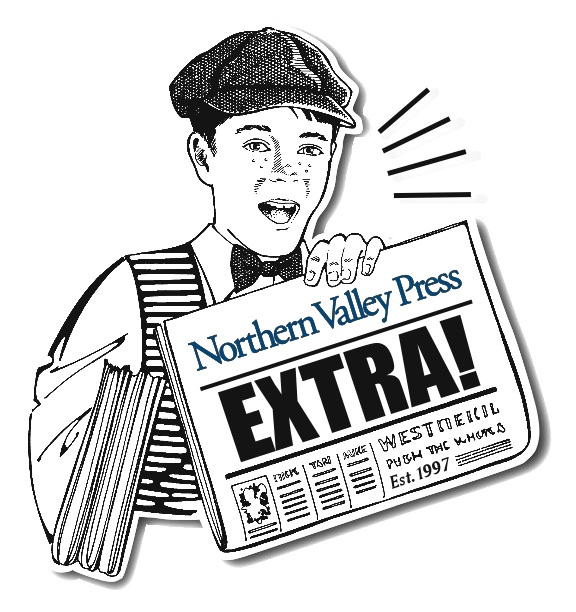
UPDATE: Sources tell Northern Valley Press the meeting has been postponed by state DOT planners due to the forecast. We’ve updated the story here.
BY MICHAEL OLOHAN
OF NORTHERN VALLEY PRESS
DEMAREST, N.J.—A draft planning study with several design alternatives for a proposed 7.4-mile Northern Valley Greenway will be discussed on Jan. 29 from 4:30 to 8 p.m. at a public information session at Northern Valley Regional High School at Demarest.
The state Department of Transportation will release preliminary findings from its Northern Valley Greenway planning study and seek input and feedback on the draft plans prior to finalizing possible designs to be issued in a final report due in March.
The proposed park seeks to convert unused railroad tracks in Tenafly north through Northvale, ending at the New York border, to passive recreation.
“You will have an opportunity to review exhibits of the draft study findings, ask questions and discuss any concerns” with NJDOT and NV5 representatives, said Anthony Sytko, NJDOT regional manager for community and constituent relations.
“We are looking for public input and residents will have a chance to talk to all the consultants and officials involved,” said project lead Andrew Mikesh of the Northern Valley Greenway interlocal team.
The NJDOT meeting notice advised property owners with rental units to encourage tenants to participate in the forum and find out more about the greenway.
Officially called a technical planning assistance study, the planning effort was conducted by NV5, Parsippany, a planning and technical consultant who was contracted by NJDOT.
The study incorporates data from geographic information systems, field observation, stakeholder and public input, including a Sept. 26, 2018, “invitation only” stakeholder workshop held at The Clinton Inn in Tenafly.
The Jan. 29 forum is the second public session held by NJDOT to seek comments on possible greenway designs.
The planning study’s purpose is “to document and assess environmental constraints, general opportunities for a greenway, and future considerations related to constructability and permitting,” said Anthony Sytko, a DOT regional manager for community and constituent relations, in a statement.
The study is being conducted under the DOT’s Office of Bicycle and Pedestrian Programs.
A final greenway planning study from NJDOT is expected in March and the Jan. 29 meeting offers residents and public officials of six towns traversed by the greenway an opportunity to view draft findings.
The proposed greenway cuts across Tenafly, Cresskill, Demarest, Closter, Norwood and Northvale, where it may connect to existing trails in New York State.
Tenafly ‘gateway’ committee
Tenafly’s Borough Council heard from a resident Jan. 15 hoping to form a committee to begin planning and initiatives to make Tenafly the “gateway” to the greenway.
He proposed a committee “to take this new asset…and help it breathe life into the residential part and the downtown,” said resident Fred Silver.
Silver said he wants Tenafly to be the anchor for the Northern Valley Greenway to help increase economic activity and such a committee would begin planning these efforts.
Silver noted adding trails to the greenway is likely to attract more visitors to specific areas of Tenafly, including walkers, hikers and bikers using the trail. He called the greenway an “economic engine” to Tenafly which will attract more local retailers.
Mikesh called such a local planning committee “a great idea […] something that would enhance everybody’s ability to implement an overall community asset going forward.”
He said if the committee works, each town should consider forming a committee to integrate the greenway into its community.
Council members agreed to discuss forming a committee at an upcoming meeting.
All six towns passed resolutions in 2017 to support the effort to convert the currently unused railroad line—owned by CSX Corp., a rail transportation conglomerate based in Florida—into a greenway.
Greenway genesis
The effort, now a project of the Rotary Clubs of Tenafly, Northern Valley and Cresskill/Demarest, began in 2016 when Haworth teenager Alexander Phillliou started a Change.org petition to build support for a greenway effort on the unused rail line.
Philliou was spurred on by the death of 13-year-old boy who was hit by a truck while riding to school.
At the time, area Rotary clubs endorsed his efforts, borough councils passed resolutions of support, and an interlocal committee was formed by Tenafly Rotary to build consensus for the project.
In August 2018, an official planning effort began when the state DOT hired NV5 to start technical studies.
In addition to sponsoring the greenway efforts, the Tenafly Rotary Club charitable organization, which is a nonprofit organization, is actively raising funds to jump-start efforts to pursue the greenway.

Greenway fundraising
As of Jan. 21, almost $32,000 of a $50,000 fundraising goal had been raised in a friendly online competition between residents of six towns bisected by the greenway.
According to Mikesh, the greenway’s purchase—through a “railbanking agreement” with CSX—will likely be financed by county, state and federal transportation funds, along with local donations, sponsorships and grants.
Railbanking was created by a 1983 federal law whereby a railroad company and a trail agency may use an out-of-service rail corridor as a trail until a railroad might again need the corridor for rail service.
While no cost estimates for the draft greenway designs were available, planning officials anticipated the project to be a multi-year effort enlisting all levels of government, the private sector, philanthropic organizations, and corporate and individual donors.


